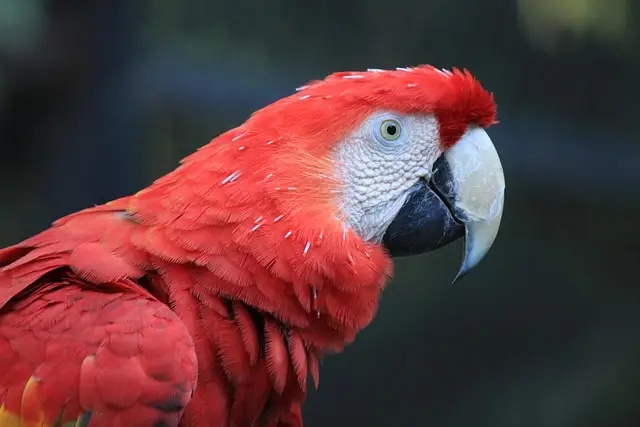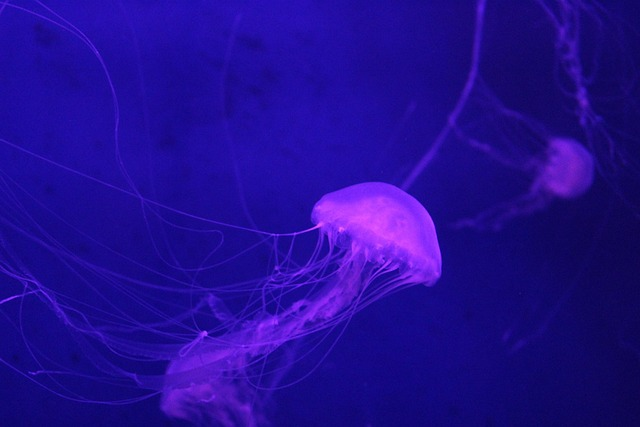The potoo is one of nature’s strangest and most fascinating birds. Found throughout Central and South America, this nocturnal creature is known not only for its haunting eyes and ghostly calls, but also for its near-magical ability to vanish in plain sight. With seven known species, each with its own quirks, potoos have sparked curiosity among birdwatchers, researchers, and animal lovers alike.
Despite their unusual appearance and peculiar behavior, very little is widely known about these elusive birds. In this article, we’ll explore some of the most captivating facts about potoos from their physical traits and behaviors to their habitats and predators.
1. A Bird That Looks Like a Tree Branch

Potoos are masters of camouflage. During the day, they sit completely still on tree stumps or broken branches, blending in so well that they are nearly impossible to see. Their feathers mimic the colors and textures of bark, allowing them to disappear into their surroundings.
To complete the illusion, a potoo will stretch its body upward, close its eyes until only slits remain, and stay motionless for hours. This behavior, known as “branch mimicry,” helps the potoo avoid predators and remain undetected by both prey and humans.
2. Seven Species of Potoo
There are seven recognized species of potoo. These include:
- Common potoo (Nyctibius griseus)
- Great potoo (Nyctibius grandis)
- Northern potoo (Nyctibius jamaicensis)
- Andean potoo (Nyctibius maculosus)
- White-winged potoo (Nyctibius leucopterus)
- Long-tailed potoo (Nyctibius aethereus)
- Rufous potoo (Nyctibius bracteatus)
Each species lives in different regions and habitats, from lowland forests to mountainous areas. The great potoo is the largest, while the rufous potoo is one of the most rarely seen due to its elusive habits and remote habitat.
3. Wide Range of Habitats
Potoos are found in diverse habitats, including:
- Tropical rainforests
- Mangroves
- Savannas
- Cloud forests
- Even near urban areas
They live across much of Central and South America, with populations in countries like Brazil, Colombia, Peru, Ecuador, and Mexico. Surprisingly, they are not found in Chile, making it one of the few South American countries without native potoos.
4. A Mysterious Lifespan
One of the many unknowns about potoos is how long they live. Experts estimate their lifespan to be around 12 to 14 years, but no one knows for sure. Because they are so secretive and rarely kept in captivity, long-term studies of individual potoos are difficult.
5. Size and Weight Varies by Species
Potoos range in size depending on the species:
- Smallest potoos measure around 21–25 cm (8–10 inches) in length and weigh 46–58 grams (1.6–2 ounces)
- Largest potoos, like the great potoo, can reach 46–58 cm (18–23 inches) in length and weigh up to 340–652 grams (12–23 ounces)
Despite their large appearance and strong beaks, potoos are lightweight birds, adapted for a life of flight and camouflage rather than strength.
6. Feather Color Matches Their Environment
Their feather color ranges from pale grey to brown, often with streaks or speckles that mimic the texture of bark or lichen. This color pattern isn’t just for looks—it’s key to their survival. Their camouflage allows them to rest openly on branches during the day without being noticed.
7. They’re Insect-Eaters
Potoos feed almost entirely on flying insects, especially:
- Beetles
- Moths
- Grasshoppers
- Termites
- Other night-flying bugs
At night, they perch silently on a high branch, waiting for insects to fly past. Then, with a swift and silent swoop, they catch them mid-air. Potoos have wide mouths and short beaks, perfect for this kind of hunting.
8. No Nests—Just a Branch
Unlike most birds, potoos do not build nests. Instead, they lay a single egg in a natural dip or crevice on a tree branch or stump. The egg rests directly on the bark with no added materials. The parent bird sits on the egg, camouflaged against the branch. The chick, once hatched, is covered in downy feathers that also help it blend into its surroundings.
9. Unusual Eyes and Eyelids
Potoos have very large eyes that help them see in low light. These eyes shine brightly when light hits them, much like a cat’s eyes at night. To help them stay hidden during the day, potoos have slitted eyelids that let them see even when their eyes are nearly closed. This way, they can watch for danger while still appearing completely asleep.
10. Haunting Night Calls
One of the most famous things about potoos is their eerie call. Their sounds are often described as:
- Ghostly wails
- Melancholy whistles
- Moaning howls
These calls travel long distances at night and are used to communicate with other potoos, mark territory, and attract mates. In many regions, local people associate the calls with ghost stories or omens because of their haunting sound.
11. Predators Do Exist
Despite their camouflage, potoos still have natural enemies. Their known predators include:
- Falcons: Fast, sharp-eyed birds that can spot a potoo even in disguise
- Monkeys: Species like howler monkeys, capuchins, and spider monkeys may raid nests and eat eggs or chicks
Potoos rely heavily on their stillness and disguise to avoid detection from these threats.
12. No Speed Records Yet
There is no confirmed top speed for a potoo in flight. Because they hunt at night and often from stationary perches, they don’t chase down prey in the same way hawks or falcons do. Their flying style is often slow and smooth, adapted for short flights between perches rather than fast pursuits.
13. They Are Not Owls or Nightjars
Potoos are often confused with owls or nightjars, but they are not related to either. They belong to their own bird family: Nyctibiidae. While they do share nocturnal habits with owls and nightjars, potoos are unique in appearance, behavior, and classification.
14. Conservation Status: Least Concern (for Now)
Currently, all potoo species are listed as Least Concern on the IUCN Red List. However, this does not mean they are safe forever. Threats such as deforestation, habitat fragmentation, and climate change could put some species at risk in the future.
Because potoos are difficult to study, exact population numbers are not known for most species. Conservationists continue to monitor them, especially in regions where forest habitats are disappearing quickly.
15. Still Full of Mystery

Even with all we do know about potoos, they remain one of the least understood birds in the world. Their quiet behavior, remote habitats, and incredible camouflage make them hard to find and observe. This mystery only adds to their charm and has made them a popular subject in folklore and wildlife photography.
Potoos are truly one of nature’s most unusual and fascinating creatures. Their ability to disappear in plain sight, their haunting nighttime calls, and their secretive lives make them a treasure of the forests of the Americas. As our world changes and habitats shrink, the importance of learning about and protecting rare birds like the potoo becomes more urgent than ever.



